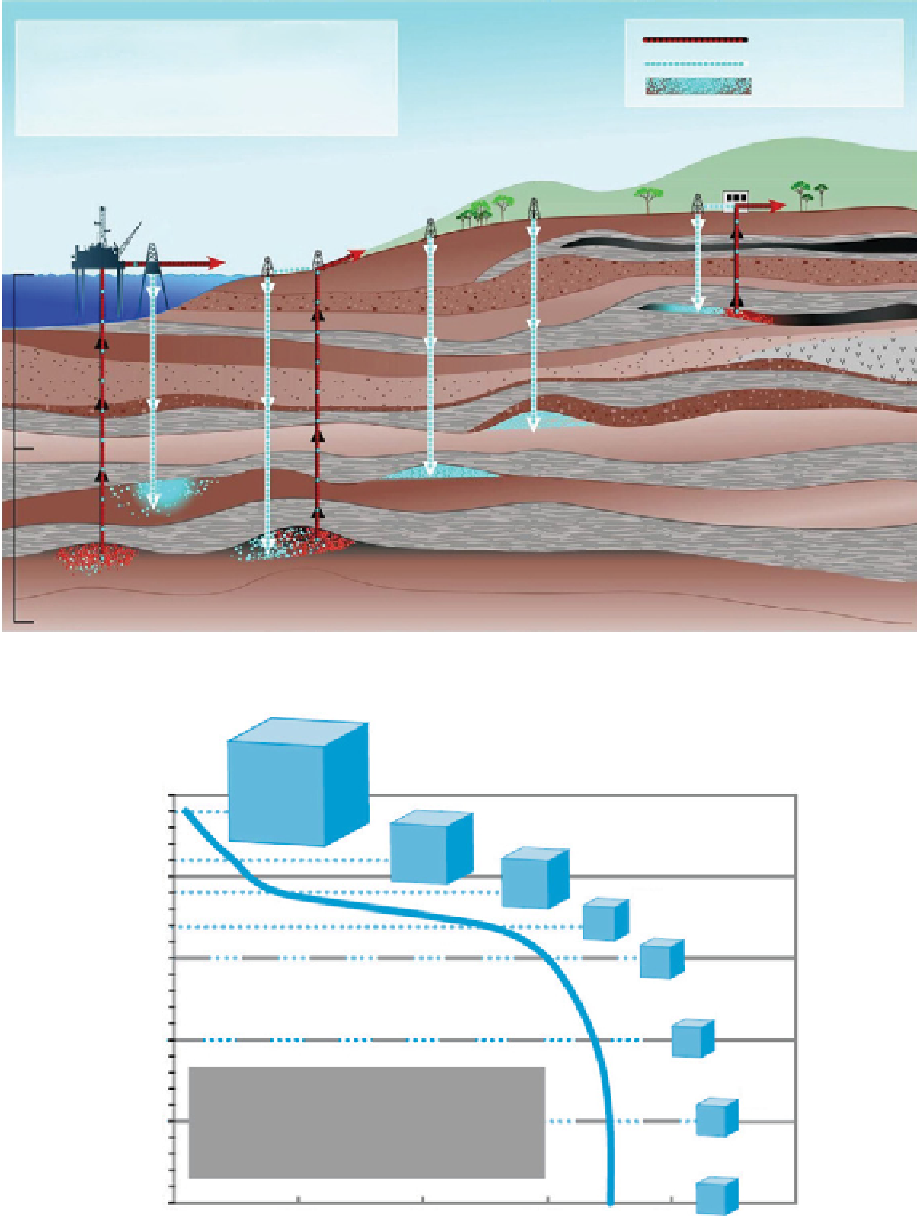Environmental Engineering Reference
In-Depth Information
Overview of geological storage options
1 Depleted oil and gas reservoirs
Produced oil or gas
Injected CO
2
2 Use of CO
2
in enhanced oil and gas recovery
3 Deep saline formations: (a) offshore and (b) onshore
4 Use of CO
2
in enhanced coal-bed methane recovery
Stored CO
2
1
4
3b
3a
2
1km
2km
fiGure 21.5
methods for storing CO
2
in deep underground geological formations. Courtesy from Ref. [13].
100
0
20
11
0.5
3.8
3.2
1
2.8
1.5
Assuming a geothermal gradient
of 25°C km
-1
from 15°C at the
surface, and hydrostatic pressure
2.7
2
2.7
2.5
0
200
400
Density of CO
2
(g m
-3
)
600
800
1000
fiGure 21.6
Variation of CO
2
density with depth, assuming hydrostatic pressure and a geothermal gradient of 25°C km
-1
from 15°C at
the surface [12]. CO
2
density increases rapidly at a depth of approximately 800 m, when the CO
2
reaches a supercritical state. Cubes represent
the relative volume occupied by the CO
2
and down to 800 m; this volume can be seen to dramatically decrease with depth. At depths below
1.5 km, the density and specific volume become nearly constant. Courtesy from Ref. [13].

